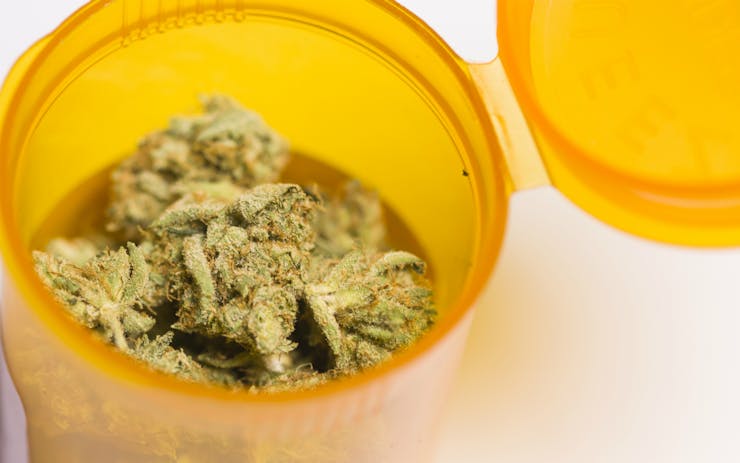LANSING, Mich. (AP) — The Michigan House gave final approval to bills Wednesday that would further regulate medical marijuana nearly eight years after its use was first authorized by voters.
The main legislation, which passed 83-22, would impose a new tax and establish a state licensing system to grow, process, sell, transport or test cannabis. Non-smokable forms of the drug such as food and lotions would become legal under a bill that was approved 93-12, surpassing the constitutionally required three-fourths needed to amend a voter initiative. Another measure, OK’d 85-20, would create a monitoring system to track cannabis from “seed to sale” and flag excess purchases.
Here’s a look at the marijuana measures that Gov. Rick Snyder is expected to sign into law:
Why Is it Needed?
Under existing law, 211,000 patients registered with the state grow their own cannabis or obtain it from 37,000 designated caregivers who can supply a limited number of people. That system will continue. The bills’ supporters, citing court rulings spurred by prosecutions, say the legislation is needed to allow dispensary businesses that have gone unchecked in some municipalities and have been blocked in others under a Michigan Supreme Court ruling. Backers add that marijuana would be safer if it were tested and distributed through a tiered system similar to alcohol. Patients, including children, also could benefit from using alternatives such as cannabis pills, backers say.
Opposition
Some marijuana advocates say the new 3 percent tax on dispensaries — coupled with adding more middlemen between growers and sellers — would make cannabis a more expensive medicine and potentially lead to more fraud and abuse. There also is criticism that patients who continue growing their own marijuana or buying it from caregivers have to help pay for the additional regulations. The legislation allocates $8.5 million to implement the licensing and tracking systems; the money would come from a fund that is financed with fees that patients and caregivers must pay to get registry ID cards.
Local Control
Growers, processors, shippers, testing facilities and dispensaries (“provisioning centers”) could not obtain a state license unless their local government adopts an authorizing ordinance. Municipalities could cap the number of licenses within their borders and assess no more than a $5,000 fee per license. A state board would charge application and renewal fees to cover costs including for substance abuse programs and law enforcement.
Tax Revenue
Legislative economists have not estimated how much in tax revenue may be generated. The money would be split as follows: 30 percent to the state; 30 percent to counties with a marijuana facility; 25 percent to cities or townships with a facility; 5 percent to the Michigan State Police; 5 percent to county sheriffs; and 5 percent for a law enforcement standards commission. The state’s share initially would go to the general fund. Starting in October 2018, it would be deposited into a fund to cover workers’ compensation benefits for firefighters with certain types of cancer.
When Will Changes Happen?
The laws will take effect 90 days after they are signed. But people wanting state operating licenses could only begin applying 360 days later, likely sometime in early 2018. The state is required to seek outside bids from companies wanting to create and run the cannabis tracking system. Once a contract is awarded, the firm would have 180 days to deliver.





